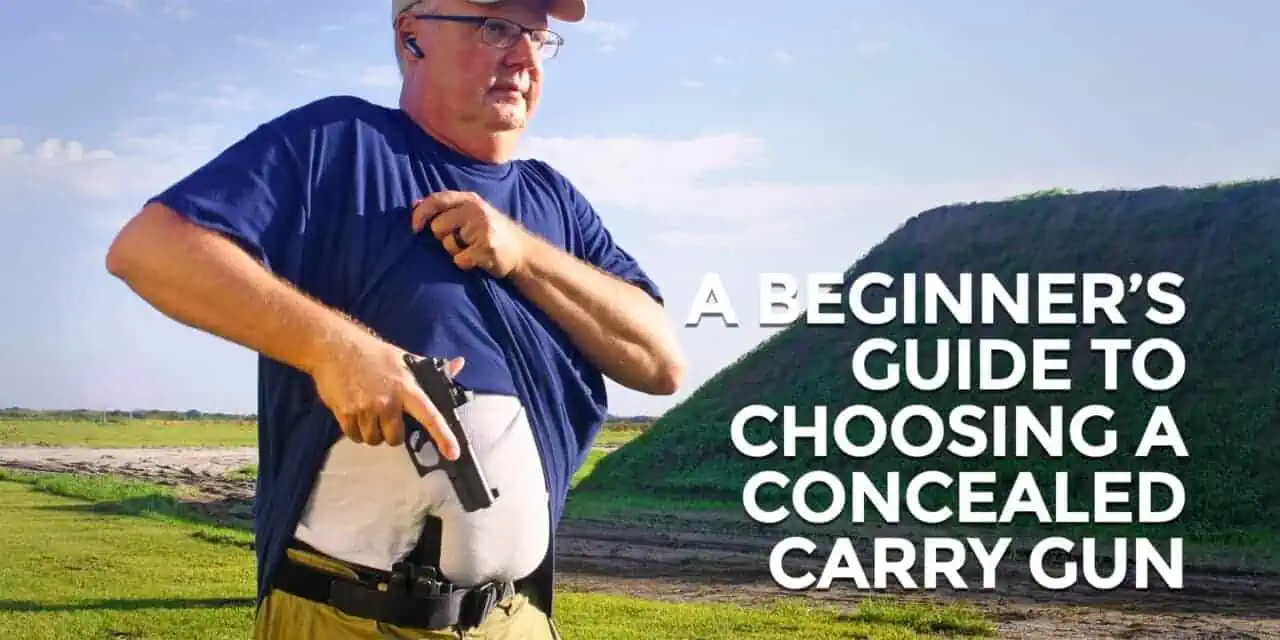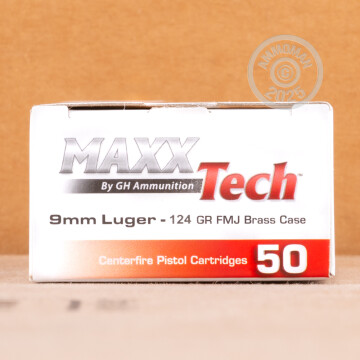Small, concealable weapons have been around since mankind fist figured out how to make small knives for self-defense. The introduction of firearms and pistols continued that trend towards small weapons designed with self-defense in mind. The fact is, the concealed carry gun has been around almost as long as guns have been around.
The trend towards concealable pistols first started with small wheellock and flintlock guns that could be hidden inside loose clothing. Pistols got even smaller with the invention of the metallic cartridge. The derringer pistol was a popular choice for discrete defensive carry in the Old West, and it remains popular to this day. The options for a concealed carry gun continued to expand to the point where today, they are a major driver of firearms sales in America.
The reason for this is quite simple. America’s gun owners are changing as America itself changes. We, as a nation, are more urban than we were 100 years ago. Outdoor pursuits such as hunting are not as popular as they once were. Rather, according to the National Shooting Sports Foundation, today’s gun owners are more interested in personal defense, target shooting and competition.
Together, these pursuits form what is known as “Gun Culture 2.0.” Gun Culture 1.0 was mainly about using guns as a means to enjoy the outdoors and secure a food source, with personal defense in second or third place. Today, though, we are more concerned about crime rates and civil unrest. We look to our firearms as a means to defend ourselves, and that places a special emphasis on the concealed carry gun.
 So what makes a good concealed carry gun? It’s a balance of three things: Concealability, Firepower, and Accuracy. Let’s define each of these terms.
So what makes a good concealed carry gun? It’s a balance of three things: Concealability, Firepower, and Accuracy. Let’s define each of these terms.
Concealability: How easy it is to hide a given pistol on your person? In general, smaller guns are easier to hide than larger guns. However, some dimensions of a pistol affect concealability more than others. The height of a pistol (the distance from the top of the sights to the bottom on the grip) has a large effect on how easy it is to hide a gun. Taller guns poke out from underneath a concealing garment more than shorter guns do. Also, lighter guns place less of a burden on your gun belt and cause it to sag less. This is just two of the reasons why lower-capacity, polymer-framed pistols tend to be popular concealed carry guns.
Firepower: Simply put, this is how much lead you can throw down range before you need to reload. Magazine capacity plays a large role here. The ten round magazine of a Glock 48 makes it an attractive choice for a concealed carry gun. However, that ten round magazine means it’s taller than other guns of similar size, which means it’s harder to conceal than, say, a Beretta APX Carry.
Caliber can also influence how much firepower a gun has. Modern defensive ammunition has negated almost all of the supposed advantages of .45 ACP or .40 S&W over 9mm. However, defensive ammunition still needs to reliably penetrate 12 inches or more of ballistics gel, and that can be a challenge for smaller calibers like .22 LR. All the bullets in the world do you little good if they can’t stop the threat.
Accuracy: How easy is it to hit your target with this gun? Smaller guns tend to suffer here. They have less mass to soak up recoil and provide quick follow up shots. There is also less of them to hold onto, which means your grip will have less effect, making for less accuracy. Firepower can also play a role here. Five rounds of .357 Magnum in a small pocket revolver may seem like a good idea. However, once you realize that you’ll probably need to make a follow-up shot and the recoil from your gun has lifted your sights far above the target, you’ll probably begin to question some of the choices you made which have brought you to this point in life.
With that in mind, let’s look at some specific choices for a concealed carry that balance the needs of concealability, firepower and accuracy in different ways.
Pocket-Sized Concealed Carry Guns
This type of gun sacrifices firepower and accuracy in favor of concealment. In years past, this size of gun meant one thing, a small revolver in .38 Special like the Colt Detective or S&W 642. Small and lightweight, they typically hold just 5 rounds of ammo and are not known for their accuracy.
Recently, however, small .380 ACP semi-automatic pistols have become a popular choice for a pocket gun. These guns tend to be flatter than their revolver cousins, making them less noticeable in a pocket. The standard bearer for this type of gun is the Ruger LCP, one of most-popular guns in America. It’s not the most powerful gun on the market. It holds only six or seven rounds in a magazine, but it’s very easy to conceal and accurate enough, within 10 yards, to get the job done.
Subcompact Carry Guns
This is a fairly new category of concealed carry guns. These guns are just a little too big to be considered pocket guns, but don’t have the barrel length or capacity of a larger gun. Typical guns in this category are the Glock 48, S&W Shield and a host of others. 9mm is the most common caliber in this type of gun, but there are options for .40 S&W and .45 ACP if you prefer those calibers.
Pistols like the Springfield Hellcat and Sig Sauer P365 are an even more recent development with this type of gun. They have the small size of their peers, but they hold up to 15 rounds in the magazine, which is similar to larger pistols such as the Glock 19. This has made them a very popular option for concealed carry, as they offer higher capacity in a very small size.
Compact Pistols
I recommend these kinds of guns as a starting point for people who want to buy their first gun. Guns like the Glock 19, CZ P07 or Ruger Security 9 Compact have enough rounds to see the fight through to the end, yet are small enough to conceal under everyday clothing. One of the hidden advantages of this size of gun is that they’re comfortable to shoot for long periods of time. This leads to longer practice sessions and more training, which in turn leads to better marksmanship with your concealed carry gun.
9mm is the most popular caliber in pistols of this size. However, the tradeoffs between caliber size and ammunition capacity become quite noticeable in this size of gun. A Glock 19 holds 15 rounds of 9mm, but the similarly-sized Glock 23 holds 13 rounds. The S&W M&P Compact 9mm holds 15 rounds in a magazine, and the same gun in .45 ACP holds just 10 rounds. Does the larger, heavier .45 ACP round have enough power to make up for losing 5 rounds in the magazine? In my opinion, no, but your opinion may be different.
Full Size Pistols
Welcome to the home of the service pistol. These guns are pushing the limits of what could be considered concealable, but they tend to be accurate at longer distances and have higher capacity magazines. Good examples of guns in this size group are the ubiquitous Glock 17, as well as 1911-style guns and the Sig Sauer P320. Their larger size might make them stand out when you carry them around, but they are excellent choices for a home defense pistol.
Another option in guns this size is a full-sized revolver, like a Smith & Wesson Model 66. While these guns hold only 6 rounds of .38 Special or .357 Magnum, they are simple to operate and also quite accurate. Revolvers are not as popular as they were in days gone by, but they are still a viable choice for a defensive pistol, especially in areas that restrict magazine capacity.
What concealed carry gun is right for you? Only you can tell. There is no way I can give you a definitive answer because there are so many variables that can affect your choice. Body shape and size, hand shape and size, clothing choices, previous history with guns, the list of things that can affect your choice goes on and on.
My choices for a concealed gun reflect my budget, training and lifestyle. When it comes to pocket guns, I really like the Ruger LCPII. The original LCP is one of the best-selling guns in the nation, and the LCPII improves it with a better trigger and other features. When it comes to larger, subcompact guns, I carried a Smith & Wesson Shield for years on end, and it’s a gun I know and trust. If I were to buy something that size today, though, I’d take a good, long look at the Sig Sauer P365.
My current concealed carry gun is a Glock 19 Gen 4 with a Swampfox red dot optic on the slide. I carry this gun in a Dark Star Gear appendix inside the waistband holster at around the one o’clock position on my belt. I switched to this combination for a number of reasons.
- My eyes are getting older, and picking up the front sight is becoming more difficult with each year.
- I went with a Glock over other brands of guns because of their wide range of accessories. Whatever pistol accessory you want, chances are, it’s made for a Glock.
- I wanted something with a little more firepower than the 8+1 rounds of Shield, and I wanted something that was usable beyond 25 yards. A Glock 19 with a red dot fulfills both those roles nicely.
Whatever you decide, I recommend you narrow your choices by going to a local gun range that rents pistols to customers, and try a few for yourself. It’s quite common for a gun range to let you try out different pistols for one rental fee, as long as they are all the same caliber. Spending an hour or so on the range, test-firing a few guns will help you find a concealed carry gun you will shoot often, rather than something that is there just to provide a feeling of security to your home. Above all, remember that a concealed carry gun is meant to be concealed and carried. If you make armed defense a part of your lifestyle, you will not only feel safe, but be safe as well.





